Welcome to our free classical music site

Do you write about classical music? Are you a blogger? Want to team up with Classical Connect? Send us a message, let's talk!

Do you write about classical music? Are you a blogger? Want to team up with Classical Connect? Send us a message, let's talk!
July 29, 2019. Concerto delle donne. There are not many musicians and composers to be celebrated this week (we continue to be fascinated with Hans Rott, born on August 1st of 1858, but we’ve wrote about him a year ago). On tweeks like this we often go back to composers of the Renaissance and early Baroque, but to do justice to their talents we should write about them more often. Music flourished during the Renaissance, especially in its later years. The church served as the main catalyst, but by the late 1500s more and more secular music was being written and performed. We know the names of the composers – they left a record of published music, but only rarely do the names of the performers of that music come up. We know, for example, that Girolamo Frescobaldi was famed as a great organ player, but we know him much better as a composer. History retained few names of the musicians, and of course we know little of their musicianship, as we cannot reproduce the music the way they played or sung it (with composers we at least have sheet music, but even then the matter of interpretation is quite controversial). Of all the performers, one name that stands out is Concerto delle donne. I was indeed famous during its time, and that’s why we know a little bit about it. Concerto del donne was founded by Alfonso II, Duke of Ferrara, a great patron of arts, around 1580. At that time the court of Ferrara was the music center of Italy, and, by extension, of the world. Orlando di Lasso, Carlo Gesualdo and Giaches De Wert spent time there, and so did Alessandro Striggio, lesser known these days but considered a progressive composer back then, at the end of the 16th century. Luzzasco Luzzaschi, a fine composer, was the court organist (and also Frescobaldi’s teacher). Concerto del donne’s origins go back to an informal ensemble of female courtiers who sung to entertain each other. Luzzasco Luzzaschi was probably the one to organize them into a more formal and eventually professional ensemble. Regular concerts were given for the Duke, and Concerto del donne became one of the featured performers. This was the only ensemble of female singers in all of Italy, and the quality of their singing, according to witnesses, was extraordinary. We know the names of some of the singers, such as Laura Peverara, the lead singer, Livia d'Arco and Anna Guarini, but they don’t tell us much, although the composer Francesco Manara compiled a number of madrigals in honor of Lauda Peverara. We also know about the people closely associated with the Concerto. One of them was Tarquinia Molza, a singer, poet, composer, and philosopher, and also a lady-in-waiting to Duchess Margherita Gonzaga d'Este, Alfonso’s wife. She was considered a virtuosa, both as a singer and as a violist, so much so that her performances were depicted in books. Molza most likely didn’t sing in Concerto herself but rather coached the singers. A widow, Molza had an affair with Giaches De Wert; as a lady-in-waiting she was considered a nobility, and De Wert,though a well-known composer, was of a servant class. Such a liaison was scandalous, and in 1589, when it was found out, Molza was banned from Ferrara. Court composers Lodovico Agostini and Ippolito Fiorini wrote madrigals for Concerto and so did Luzzasco Luzzaschi.
the main catalyst, but by the late 1500s more and more secular music was being written and performed. We know the names of the composers – they left a record of published music, but only rarely do the names of the performers of that music come up. We know, for example, that Girolamo Frescobaldi was famed as a great organ player, but we know him much better as a composer. History retained few names of the musicians, and of course we know little of their musicianship, as we cannot reproduce the music the way they played or sung it (with composers we at least have sheet music, but even then the matter of interpretation is quite controversial). Of all the performers, one name that stands out is Concerto delle donne. I was indeed famous during its time, and that’s why we know a little bit about it. Concerto del donne was founded by Alfonso II, Duke of Ferrara, a great patron of arts, around 1580. At that time the court of Ferrara was the music center of Italy, and, by extension, of the world. Orlando di Lasso, Carlo Gesualdo and Giaches De Wert spent time there, and so did Alessandro Striggio, lesser known these days but considered a progressive composer back then, at the end of the 16th century. Luzzasco Luzzaschi, a fine composer, was the court organist (and also Frescobaldi’s teacher). Concerto del donne’s origins go back to an informal ensemble of female courtiers who sung to entertain each other. Luzzasco Luzzaschi was probably the one to organize them into a more formal and eventually professional ensemble. Regular concerts were given for the Duke, and Concerto del donne became one of the featured performers. This was the only ensemble of female singers in all of Italy, and the quality of their singing, according to witnesses, was extraordinary. We know the names of some of the singers, such as Laura Peverara, the lead singer, Livia d'Arco and Anna Guarini, but they don’t tell us much, although the composer Francesco Manara compiled a number of madrigals in honor of Lauda Peverara. We also know about the people closely associated with the Concerto. One of them was Tarquinia Molza, a singer, poet, composer, and philosopher, and also a lady-in-waiting to Duchess Margherita Gonzaga d'Este, Alfonso’s wife. She was considered a virtuosa, both as a singer and as a violist, so much so that her performances were depicted in books. Molza most likely didn’t sing in Concerto herself but rather coached the singers. A widow, Molza had an affair with Giaches De Wert; as a lady-in-waiting she was considered a nobility, and De Wert,though a well-known composer, was of a servant class. Such a liaison was scandalous, and in 1589, when it was found out, Molza was banned from Ferrara. Court composers Lodovico Agostini and Ippolito Fiorini wrote madrigals for Concerto and so did Luzzasco Luzzaschi.
Alfonso II died in 1597 without issue, Ferrara was annexed by Pope Clement VIII, the court moved to Modena, and Concerto del donne was disbanded. What is left is a large number of madrigals that were written for this remarkable ensemble. Here’s Luzzaschi’s madrigal O dolcezz' amarissime d'amore. Even today it requires virtuoso performers, like Dame Emma Kirkby and other singers of the Consort of Musicke (Anthony Rooley conducting).Permalink
July 22, 2019. Pianists and singers. Three pianists were born this week: Americans Leon Fleisher and Alexis Weissenberg, and a Portuguese, Maria João Pires. Leon Fleisher will turn 91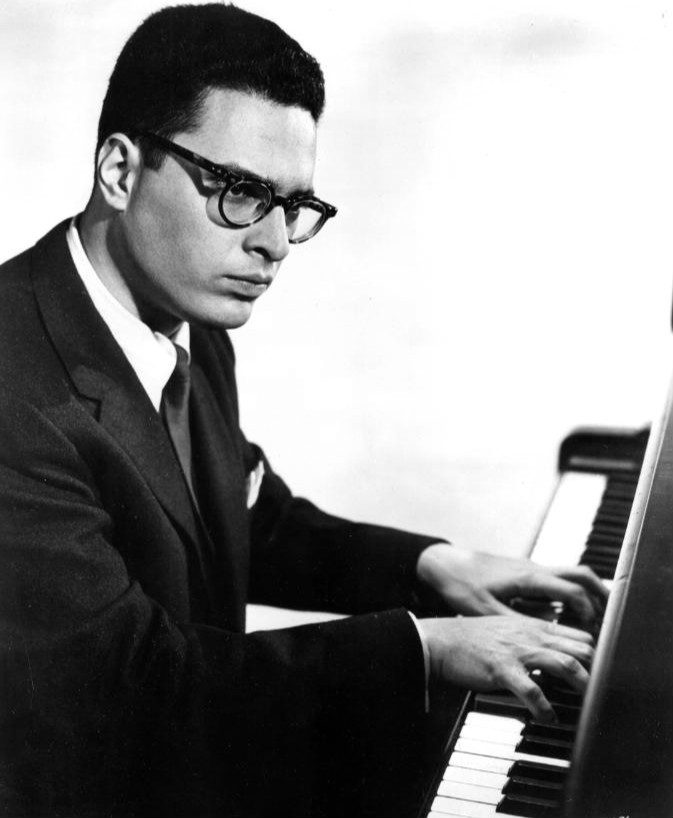 tomorrow, he was born on July 23rd of 1928 in San Francisco, into a family of poor Jewish immigrants from Eastern Europe. Fleisher started his piano studies at the age of four. He had several piano teachers but eventually became a pupil of the great German pianist Artur Schnabel, who by then emigrated from Nazi Germany to the United States. In 1942, the 14-year-old Fleisher played Liszt’s Piano Concerto no. 2 with the San Francisco Symphony Orchestra under the direction of Pierre Monteux (Monteux called Fleisher “the pianistic find of the century”). A year later they performed the Brahms D Minor piano concerto (no. 1). The following year, now 16 years old, Fleisher played his first concert at Carnegie Hall; again, it was Monteux conducting and but this time the orchestra was the New York Philharmonic. In 1952, Fleisher won the Queen Elisabeth competition, the first American to do so. He was performing and recording extensively (for example, with the Cleveland orchestra under the direction of George Szell he made the famous recordings of all Beethoven and both Brahms’s piano concertos). He was considered one of the greatest young pianists of his generation when a disaster struck: in 1965 Fleisher lost control of his right hand due to the focal dystonia, an illness which makes the muscles of the fingers contract involuntarily. All he could do was play a very limited repertoire for the left-hand, its central pieces being piano concertos by Ravel and Prokofiev. In 1981 he had surgery which didn’t help much; further treatments followed, and Botox seemed to have helped the most - eventually Fleisher managed to return to the two-hand repertoire. It wasn’t till 2004 that Fleisher released an album titled “Two Hands,” his first in almost 40 years, in which he played works by Bach, Scarlatti, Chopin, Debussy and Schubert. He never recovered his former spectacular technique, and of course he was of a certain age when technique simply deteriorates - in 2004 he was already 76 years old.
tomorrow, he was born on July 23rd of 1928 in San Francisco, into a family of poor Jewish immigrants from Eastern Europe. Fleisher started his piano studies at the age of four. He had several piano teachers but eventually became a pupil of the great German pianist Artur Schnabel, who by then emigrated from Nazi Germany to the United States. In 1942, the 14-year-old Fleisher played Liszt’s Piano Concerto no. 2 with the San Francisco Symphony Orchestra under the direction of Pierre Monteux (Monteux called Fleisher “the pianistic find of the century”). A year later they performed the Brahms D Minor piano concerto (no. 1). The following year, now 16 years old, Fleisher played his first concert at Carnegie Hall; again, it was Monteux conducting and but this time the orchestra was the New York Philharmonic. In 1952, Fleisher won the Queen Elisabeth competition, the first American to do so. He was performing and recording extensively (for example, with the Cleveland orchestra under the direction of George Szell he made the famous recordings of all Beethoven and both Brahms’s piano concertos). He was considered one of the greatest young pianists of his generation when a disaster struck: in 1965 Fleisher lost control of his right hand due to the focal dystonia, an illness which makes the muscles of the fingers contract involuntarily. All he could do was play a very limited repertoire for the left-hand, its central pieces being piano concertos by Ravel and Prokofiev. In 1981 he had surgery which didn’t help much; further treatments followed, and Botox seemed to have helped the most - eventually Fleisher managed to return to the two-hand repertoire. It wasn’t till 2004 that Fleisher released an album titled “Two Hands,” his first in almost 40 years, in which he played works by Bach, Scarlatti, Chopin, Debussy and Schubert. He never recovered his former spectacular technique, and of course he was of a certain age when technique simply deteriorates - in 2004 he was already 76 years old.
During the time that his right hand wasn’t working, Fleisher began conducting and teaching (he’s the Chair of the piano department at the Peabody). Even though his career lasted for not more than 15 years, Leon Fleisher will be remembered as one of the greatest performers of the 20th century. Here’s his recording of Brahms’s Piano Concerto no. 2, which we mentioned earlier. It was made in 1962; George Szell conducts the Cleveland Orchestra.
Two more notable pianists were born this week, Alexis Weissenberg on July 26th of 1929 (Weissenberg died in 2012) and Maria João Pires, on July 23rd of 1944 who, at the age of 75, retired from big tours but continues to give concerts.
Two of the greatest Italian tenors of the 20th century were born this week: Giuseppe Di Stefano on July 24th of 1921 and Mario Del Monaco – on July 27th of 1915. Here’s the heroic Del Monaco with the young (27 years old) Maria Callas in Mexico City in 1951 in Verdi’s Aida. The recording is semi-professional (you can clearly hear the prompter, as the microphone was positioned somewhere close to his booth) but the singing is phenomenal.Permalink
July 15, 2019. Mostly violinists. The famous Belgian violinist and composer, Eugène Ysaÿe was born this week, on July 16th of 1858 in Liège. At the age of seven Eugène entered the Liège Conservatory, dropped out four years later but then returned to graduate with a silver medal. After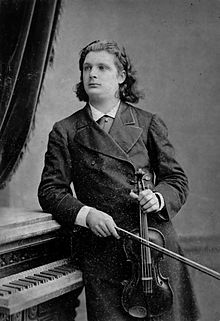 leaving the Conservatory, he took lessons with two of the greatest violinists of the time, with Henryk Wieniawski in Brussels and with Henry Vieuxtemps in Paris. In 1879 he became the concertmaster of the Bilse orchestra in Berlin, that eventually evolved into the Berlin Philharmonic. Anton Rubinstein, the famous Russian pianist and the founder of the Saint Petersburg conservatory, heard him play and helped Ysaÿe with his first contracts as a soloist. After touring several countries, Ysaÿe returned to Paris, already an acclaimed virtuoso. While in Paris, Ysaÿe met many contemporary composers, among them Saint-Saëns, Franck and Fauré. He played at the prestigious Concert Colonne to great success. In 1887 he returned to Brussels to teach violin class at the Conservatory. He was also composing: a quartet and several violin sonatas were his first pieces. Such was his fame that many newly-written compositions were dedicated to him, among them César Franck’s Violin Sonata, Ernest Chausson’s Concert and Poème, Vincent d'Indy's First String Quartet and Claude Debussy’s String Quartet. In 1895 Ysaÿe formed a duo with the French pianist and composer Raoul Pugno which became world famous; he also played with Arton Rubinstein, Ferruccio Busoni, Alexander Siloti and other celebrated pianists of the time. In 1914 Ysaÿe toured the US, again to great success; the time from 1900 to the beginning of WWI was the peak of his career. Ysaÿe had health problems from the age of 50 (he had diabetes, his right foot would be eventually amputated), he also had problems with the right hand and bow control. As his playing deteriorated (which happened rapidly), his performances became rare; he concentrated instead on conducting, composing and teaching. As a teacher, he was extremely influential; among his students were Joseph Gingold, who himself became a famed violin teacher (Gil Shaham, Joshua Bell and Leonidas Kavakos are just three of Gingold’s students); one of the greatest viola players of the 20th century William Primrose, as well as Nathan Milstein, and Jascha Brodsky. Ysaÿe’s influence on the development of the modern style of violin playing is hard to overestimate. Here’s Ysaÿe’s Sonata no. 2, op. 27 for violin solo, dedicated to Jacques Thibaud, Ysaÿe’s friend. It’s performed by Frank Peter Zimmermann
leaving the Conservatory, he took lessons with two of the greatest violinists of the time, with Henryk Wieniawski in Brussels and with Henry Vieuxtemps in Paris. In 1879 he became the concertmaster of the Bilse orchestra in Berlin, that eventually evolved into the Berlin Philharmonic. Anton Rubinstein, the famous Russian pianist and the founder of the Saint Petersburg conservatory, heard him play and helped Ysaÿe with his first contracts as a soloist. After touring several countries, Ysaÿe returned to Paris, already an acclaimed virtuoso. While in Paris, Ysaÿe met many contemporary composers, among them Saint-Saëns, Franck and Fauré. He played at the prestigious Concert Colonne to great success. In 1887 he returned to Brussels to teach violin class at the Conservatory. He was also composing: a quartet and several violin sonatas were his first pieces. Such was his fame that many newly-written compositions were dedicated to him, among them César Franck’s Violin Sonata, Ernest Chausson’s Concert and Poème, Vincent d'Indy's First String Quartet and Claude Debussy’s String Quartet. In 1895 Ysaÿe formed a duo with the French pianist and composer Raoul Pugno which became world famous; he also played with Arton Rubinstein, Ferruccio Busoni, Alexander Siloti and other celebrated pianists of the time. In 1914 Ysaÿe toured the US, again to great success; the time from 1900 to the beginning of WWI was the peak of his career. Ysaÿe had health problems from the age of 50 (he had diabetes, his right foot would be eventually amputated), he also had problems with the right hand and bow control. As his playing deteriorated (which happened rapidly), his performances became rare; he concentrated instead on conducting, composing and teaching. As a teacher, he was extremely influential; among his students were Joseph Gingold, who himself became a famed violin teacher (Gil Shaham, Joshua Bell and Leonidas Kavakos are just three of Gingold’s students); one of the greatest viola players of the 20th century William Primrose, as well as Nathan Milstein, and Jascha Brodsky. Ysaÿe’s influence on the development of the modern style of violin playing is hard to overestimate. Here’s Ysaÿe’s Sonata no. 2, op. 27 for violin solo, dedicated to Jacques Thibaud, Ysaÿe’s friend. It’s performed by Frank Peter Zimmermann
Pinchas Zukerman was born on July 16th of 1948 in Tel-Aviv, Israel. He started his music studies at the age of four, though not on the violin but on the recorder. He then switched to the clarinet and started studying the violin relatively late, at the age of eight. Isaac Stern heard him play in 1962 while in Israel and was very impressed. That year Zukerman moved to the US with Stern becoming his legal guarding and was admitted to the Juilliard. There he studied with Ivan Galamian. He also took classes in the viola. Itzhak Perlman, another Israeli kid, was also Galamian’s student. They became good friends. The pianist Daniel Barenboim, his girlfriend and later wife the cellist Jacqueline du Pré, and the (slightly older) conductor Zubin Mehta also became close friends, forming an incredible group of talented musicians. They worked and recorded together often, in twos and threes (for example, Zukerman recorded all of Beethoven’s Piano Trios with Barenboim and du Pré); there’s even a recording of all five of them playing Schubert’s Trout Quintet. Zukerman went on to become not just a brilliant violinist and violist, but also a conductor, first with the English Chamber Orchestra, then the Saint Paul Chamber Orchestra and later – with the major symphony orchestras.
Isaac Stern, one of the most influential violinists of the 20th century, was born on July 21st of 1920. He deserves a separate entry, and we’ll do it at another date.Permalink
July 8, 2019. Carl Orff. It’s quite strange, but we’ve never written about a popular, if somewhat controversial, 20th century composer, Carl Orff. Orff was born in Munich on July 10th of 1895; his father came from a line of Bavarian military officers. At the age of five Carl started music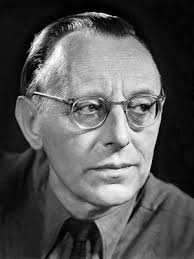 lessons, playing piano, cello and organ. In his youth he became fascinated with two very different composers, Claude Debussy and Arnold Schoenberg; one wouldn’t discern their influence on his mature works but apparently it was more obvious with his early operas, which Orff later dismissed. In 1914 he became the conductor of the Munich Kammerspiele, the state theater. During the Great War Orff was drafted, sent to the front and wounded, after which he spent the rest of the war working at the theaters of Mannheim and Darmstadt. He returned to Munich in 1919 and immersed himself in the music of the 16th and 17th centuries. In 1924 Orff staged Monteverdi’s L'Orfeo; the German text was written by Dorothée Günther, who also did the choreography. Günther, an artist and pedagogue, became Orff’s collaborator in many endeavors. It was the first such production in modern German history. Around that time Orff got interested in the concept of elementare Musik, or elemental music, understood as the synthesis of music, gesture/dance and spoken poetry. In 1924 these ideas led Orff and Günther to establish the Güntherschule, a school for gymnastics, music and dance. Orff composed a number of short simple pieces for the school, which in 1932-35 were published as Schulwerk: elementare Musikübung. Here’s the easily recognizable Gassenhauer (it was used in many movies, including Terrence Malick’s Badlands). In 1935-36 Orff composed a cantata based on a collection of poems from the 11th and 12th centuries called Carmina Burana, or "Songs from the town of Benediktbeuern" (Buria in Latin). It was premiered at the Frankfurt opera on June 8th of 1937 and became an immediate success, both with the public and officials, in the Nazi Germany. The music and especially the old texts managed to encapsulate the zeitgeist: the Nazis, avid environmentalists, worshipped nature, and so did the poems of Carmina Burana. Same with the idyllic “folk” of the poems and Nazi historic myths. The music, while influenced by Stravinsky (not a Nazi favorite), was simple in structure, pulsating with energy and forward-moving. It became a symbol of the party-approved modernism. Here’s the opening section, O Fortuna (the closing is a repeat). As Gassenhauer, it’s beenused in popular culture to no end. The recording was made by the London Symphony Orchestra with St. Clement Danes Grammar School Boys’ choir under the direction of André Previn.
lessons, playing piano, cello and organ. In his youth he became fascinated with two very different composers, Claude Debussy and Arnold Schoenberg; one wouldn’t discern their influence on his mature works but apparently it was more obvious with his early operas, which Orff later dismissed. In 1914 he became the conductor of the Munich Kammerspiele, the state theater. During the Great War Orff was drafted, sent to the front and wounded, after which he spent the rest of the war working at the theaters of Mannheim and Darmstadt. He returned to Munich in 1919 and immersed himself in the music of the 16th and 17th centuries. In 1924 Orff staged Monteverdi’s L'Orfeo; the German text was written by Dorothée Günther, who also did the choreography. Günther, an artist and pedagogue, became Orff’s collaborator in many endeavors. It was the first such production in modern German history. Around that time Orff got interested in the concept of elementare Musik, or elemental music, understood as the synthesis of music, gesture/dance and spoken poetry. In 1924 these ideas led Orff and Günther to establish the Güntherschule, a school for gymnastics, music and dance. Orff composed a number of short simple pieces for the school, which in 1932-35 were published as Schulwerk: elementare Musikübung. Here’s the easily recognizable Gassenhauer (it was used in many movies, including Terrence Malick’s Badlands). In 1935-36 Orff composed a cantata based on a collection of poems from the 11th and 12th centuries called Carmina Burana, or "Songs from the town of Benediktbeuern" (Buria in Latin). It was premiered at the Frankfurt opera on June 8th of 1937 and became an immediate success, both with the public and officials, in the Nazi Germany. The music and especially the old texts managed to encapsulate the zeitgeist: the Nazis, avid environmentalists, worshipped nature, and so did the poems of Carmina Burana. Same with the idyllic “folk” of the poems and Nazi historic myths. The music, while influenced by Stravinsky (not a Nazi favorite), was simple in structure, pulsating with energy and forward-moving. It became a symbol of the party-approved modernism. Here’s the opening section, O Fortuna (the closing is a repeat). As Gassenhauer, it’s beenused in popular culture to no end. The recording was made by the London Symphony Orchestra with St. Clement Danes Grammar School Boys’ choir under the direction of André Previn.
In 1939 Orff was involved in a morally questionable episode. The Nazis leadership of the city of Frankfurt decided to replace Midnight Summer’s Dream composed by the outlawed (Jewish) Mendelssohn with an Arian piece. Orff responded to the official call and presented his version. In 1943 he composed another cantata, Catulli Carmina, set to the verses of the Latin poet Catullus. It became his second most popular work. In 1951 he followed with Trionfo di Afrodite which, with Burana and Catulli formed a triptych. To the end of his life Orff was involved with music education. He died in Munich on March 29th of 1982.
So, what are we to think about Orff? Obviously, he isn’t guilty of the Nazis loving his Carmina Burana. He never joined the Nazi party, and had Jewish and leftist friends. On the other hand, to submit his own version of the Midsummer Night’s Dream to replace Mendelssohn’s – that’s something you wouldn’t expect from a decent person. He also composed the music for the 1936 Berlin Olympic Games – only a composer with good standing with the Nazis could be given such a role. On the other hand, he composed the music for the 1972 Munich Olympics as well. He went through the de-Nazification process after the war and was cleared of any direct collaboration. Still, after reading about him, one is left with a bad taste in the mouth. A talented but compromised figure.Permalink
July 1, 2019. Gluck and more. We should’ve written about Gustav Mahler as his birthday falls on next Sunday, July 7th: we are good internationalists and start our week on Monday, so it would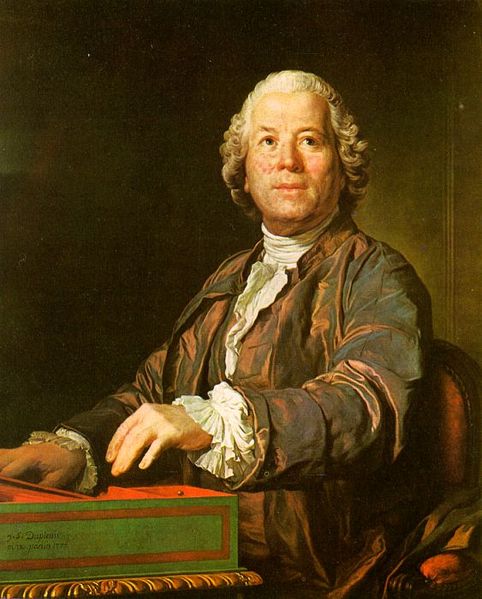 be still this week for us; however, we’ll do it in our next entry. In the meantime, we’ll remember Christoph Willibald Gluck, who was born on July 2nd of 1714 in Erasbach, a small town in Upper Palatinate, now in Bavaria. Here’s what we wrote about Gluck on his 203rd birthday anniversary; we ended our entry with Gluck settling in Vienna in 1751: “The most productive, but also the most disappointing period of his life was still ahead of him.” Gluck’s early years in Vienna were quite promising: he became the Kapellmeister to Prince Joseph of Saxe-Hildburghausen. He also taught music to Maria Antonia Habsburg, the younger daughter of Empress Maria Theresa and, as Marie Antoinette, the future queen of France. Gluck was also composing; some of his operas were performed at the Prince’s palace theater for the Emperor’s family. In 1761 Prince Joseph disbanded his orchestra and Gluck’s permanent employment was gone. This was the period during which Gluck was thinking about changing the opera. He wanted it to develop more naturally, without convoluted plots of the Italian opera seria. He didn’t like repetitions, so numerous in the baroque opera, its “da capo” arias, in which the third part duplicates the first. He wanted to get rid of the improvisations, the staple of the famous castrati. Overall, to think of it, what Gluck wanted to accomplish around 1760 was very much what Richard Wagner would do a century later. Gluck didn’t just muse about these things, he put them in writing (together with his librettist, Ranieri de' Calzabigi) in the published dedication and the preface to his opera Alceste. In that he also reminds us of Wagner who wrote extensively about the opera.
be still this week for us; however, we’ll do it in our next entry. In the meantime, we’ll remember Christoph Willibald Gluck, who was born on July 2nd of 1714 in Erasbach, a small town in Upper Palatinate, now in Bavaria. Here’s what we wrote about Gluck on his 203rd birthday anniversary; we ended our entry with Gluck settling in Vienna in 1751: “The most productive, but also the most disappointing period of his life was still ahead of him.” Gluck’s early years in Vienna were quite promising: he became the Kapellmeister to Prince Joseph of Saxe-Hildburghausen. He also taught music to Maria Antonia Habsburg, the younger daughter of Empress Maria Theresa and, as Marie Antoinette, the future queen of France. Gluck was also composing; some of his operas were performed at the Prince’s palace theater for the Emperor’s family. In 1761 Prince Joseph disbanded his orchestra and Gluck’s permanent employment was gone. This was the period during which Gluck was thinking about changing the opera. He wanted it to develop more naturally, without convoluted plots of the Italian opera seria. He didn’t like repetitions, so numerous in the baroque opera, its “da capo” arias, in which the third part duplicates the first. He wanted to get rid of the improvisations, the staple of the famous castrati. Overall, to think of it, what Gluck wanted to accomplish around 1760 was very much what Richard Wagner would do a century later. Gluck didn’t just muse about these things, he put them in writing (together with his librettist, Ranieri de' Calzabigi) in the published dedication and the preface to his opera Alceste. In that he also reminds us of Wagner who wrote extensively about the opera.
In 1762 Gluck composed what would become his most famous opera, Orfeo ed Euridice. It followed some of his own “reform” principles: a straightforward libretto, rather than cockamamie plots of the opera seria; fewer repetition in music and text, no long “melismas,” when a syllable is stretched over several notes (Handel and many other baroque composers were fond of them). Orfeo ed Euridice was premiered in Vienna’s Burgtheater on October 5th of 1762. Gaetano Guadagni, a famous castrato, sung the title role. Between 1762 and 1770 Gluck wrote eight operas. Somewhat disenchanted with the Italians, Gluck turned to the French, studying the works of Lully and Rameau (Rameau had died recently, in 1764). A French diplomat suggested to him a libretto based on Racine’s tragedy Iphigénie en Aulide. Gluck got interested; he also wanted it to be staged in Paris. When he sent the score to the Académie Royale de Musique (now, the Paris Opera), the directors rejected it. Gluck turned to his former pupil, now the Dauphine of France, wife of the heir to the French throne, Marie Antoinette. Soon after (it was the end of 1773), Gluck was on his was to Paris to start the rehearsals of his newest creation.
We’ll mention several important musicians born this week and will write about them separately: Vladimir Ashkenazy, the pianist and conductor, was born on July 6th of 1937 in Moscow. He won (together with John Ogdon) the 1962 Tchaikovsky Piano Competition, and, being married to an Islandic woman, left the Soviet Union in 1963. Ashkenazy has a broad piano repertoire, from Bach and Shostakovich to Beethoven (all sonatas), complete piano works of Chopin, Rachmaninov, Scriabin and Schumann; all piano concertos by Beethoven and Brahms, and more. He’s also a prominent conductor.
János Starker was born on July 5th of 1924 was one of the most interesting cellists of the 20th century. Starker died six years ago, on April 28th of 2013. Carlos Kleiber, the son of Erich Kleiber, was born on July 3rd of 1930; he was regarded by many as one of the greatest modern conductors.Permalink
June 24, 2019. Two Italians, Marcello and Abbado. Benedetto Marcello was born in Venice, on June 24th (but maybe onJuly 24th, or, according to other sources, on July 31st or August 1st of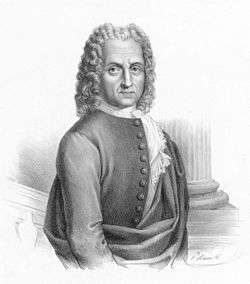 1686) in Venice. Born into a noble family, he was the younger brother of Alessandro Marcello, also a composer (read more here about the brothers). Benedetto occupied major administrative positions within the Venetian bureaucracy and wasn’t considered a professional composer; he was casual in numbering and dating his compositions, so often the dates may be derived only circumstantially. Marcello wrote a considerable number of sacred works, including nine masses (one of them a Funeral mass, or Requiem). He also wrote what he called “parafrasi” (paraphrases) on 25 psalms, published around 1724-1726 under the heading of L’Estro poetico-armonico, or Poetic and harmonic inspirations. Here is Psalm X, in the performance by the ensemble Cantus Cölln, Konrad Junghänel conducting. It’s a delightful example of late Italian baroque.
1686) in Venice. Born into a noble family, he was the younger brother of Alessandro Marcello, also a composer (read more here about the brothers). Benedetto occupied major administrative positions within the Venetian bureaucracy and wasn’t considered a professional composer; he was casual in numbering and dating his compositions, so often the dates may be derived only circumstantially. Marcello wrote a considerable number of sacred works, including nine masses (one of them a Funeral mass, or Requiem). He also wrote what he called “parafrasi” (paraphrases) on 25 psalms, published around 1724-1726 under the heading of L’Estro poetico-armonico, or Poetic and harmonic inspirations. Here is Psalm X, in the performance by the ensemble Cantus Cölln, Konrad Junghänel conducting. It’s a delightful example of late Italian baroque.
Claudio Abbado would’ve been 86 this Wednesday: he was born in Milan on June 26th of 1933.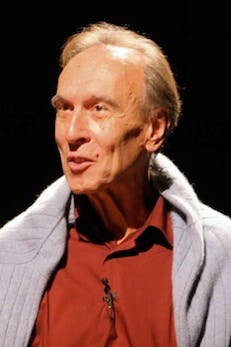 We celebrated him last year with the first movement of Mahler’s Symphony no. 4. Abbado was indeed a superb Mahlerian (he recorded his symphonies several times), but his repertory was vast (in 2013 Deutsche Grammophon released their Claudio Abbado: The Symphony Edition, which consisted of 41 CDs) and there were very few things that he hadn’t done at the highest level. Here, for example, Mozart’s Symphony no. 35 (“Haffner”), recorded in 2008. Abbado said about Mozart that he had only approached him “cautiously, once in a while,” but his interpretation of the symphony is brilliant. In this recording Abbado conducts Orchestra Mozart, Bologna, which he helped to found in 2004; that was after he was diagnosed with stomach cancer and had to leave the Berlin Philharmonic. Abbado served as the artistic director of the orchestra for many years. This is a live recording made in 2008.Permalink
We celebrated him last year with the first movement of Mahler’s Symphony no. 4. Abbado was indeed a superb Mahlerian (he recorded his symphonies several times), but his repertory was vast (in 2013 Deutsche Grammophon released their Claudio Abbado: The Symphony Edition, which consisted of 41 CDs) and there were very few things that he hadn’t done at the highest level. Here, for example, Mozart’s Symphony no. 35 (“Haffner”), recorded in 2008. Abbado said about Mozart that he had only approached him “cautiously, once in a while,” but his interpretation of the symphony is brilliant. In this recording Abbado conducts Orchestra Mozart, Bologna, which he helped to found in 2004; that was after he was diagnosed with stomach cancer and had to leave the Berlin Philharmonic. Abbado served as the artistic director of the orchestra for many years. This is a live recording made in 2008.Permalink